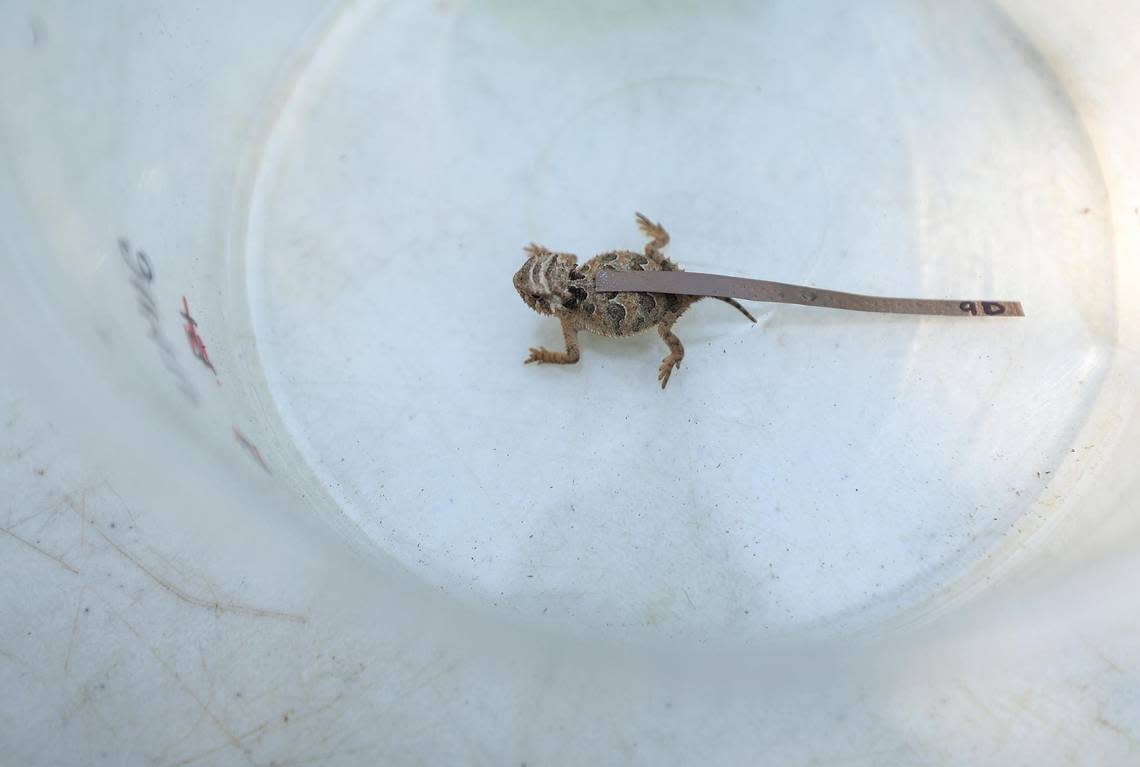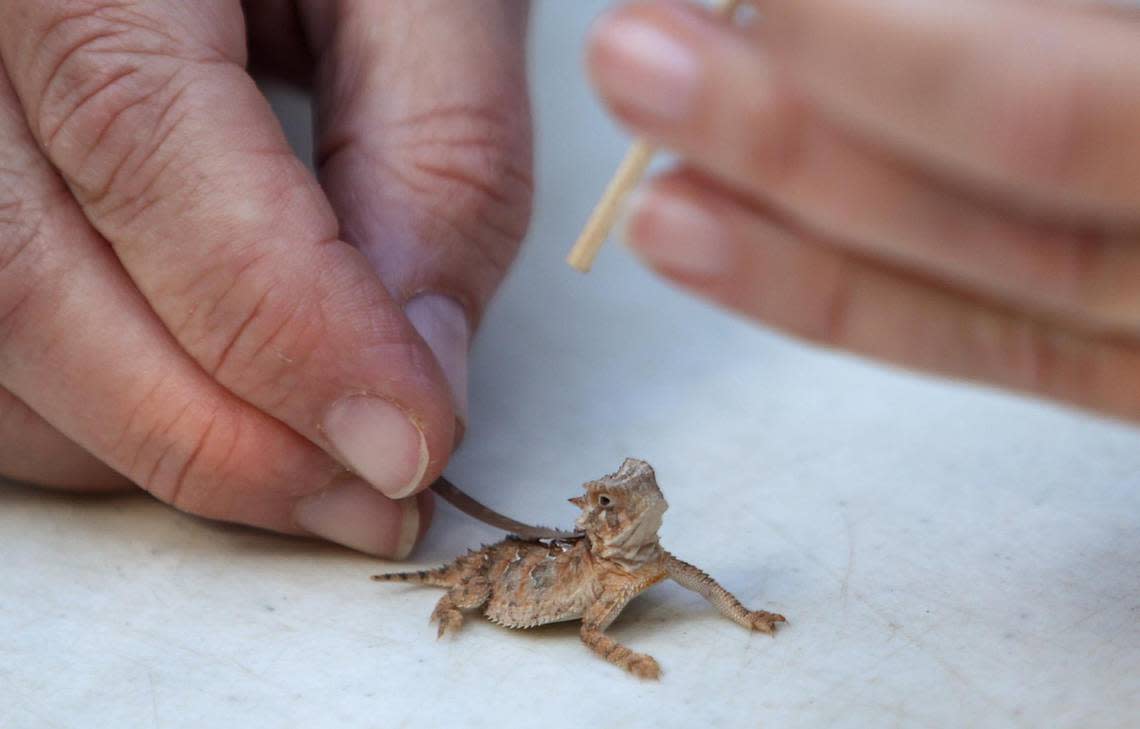What is a Horned Frog? What to know about the TCU football team’s mascot
The most popular question surrounding the Vrbo Fiesta Bowl didn’t center around quarterback Max Duggan, coach Sonny Dykes or any of the TCU players.
It centered on the team mascot. What is a Horned Frog?
Yep, bigger question than who would win the College Football Playoff semifinal between Michigan and TCU.
The horned frog has been TCU’s mascot since 1897. It has been the Texas state reptile since 1992. And although the funky, fierce-looking brown critter’s crown of horns can look intimidating — not to mention the fact that when agitated, it can shoot blood from its eyes — we Texans are rather fond of them.
What is a horned frog?
Technically, the TCU mascot is the Texas horned lizard, or Phrynosoma cornutum, and is a reptile.
The common name comes from the horns on their heads, which can vary among species. People also call them horned toads and horny toads, but they’re actually not amphibians like other toads. The reptiles have scales and claws, and they raise their young on land, according to Texas Parks & Wildlife. They grow to 3.5 to 6 inches.

Where do horned frogs live?
The species can be found throughout the West including Texas, Oklahoma, Kansas and New Mexico, but your chances of encountering them in the wild aren’t super high. That’s because they are considered a threatened species in Texas. Lawmakers first mandated the protection of the species in 1967, citing population depletion. The population is still threatened by urbanization, insecticides and non-native fire ants that feast on the eggs and babies.
But you can get a look at the critters at the Fort Worth Zoo, which is one of the only zoos in the country to successfully breed them. The program that began in 2001 is a partnership with Texas Parks and Wildlife and TCU.
The Fort Worth Zoo releases the horned frogs it raises into the Mason Mountain Wildlife Management Area. Last fall, the team released its 1,000th captive-born Texas horned lizard. The team uses transmitter tags to monitor their success in the wild to determine the feasibility of reintroducing the lizards where they once were plentiful.

Why is TCU’s mascot the horned frog?
TCU (12-1) faces Michigan (13-0) in the College Football playoff semifinals on Dec. 31 at 3 p.m.
How did TCU become the Frogs? The critter was adopted as the official mascot in 1897 because of it being a typical Texas sight. But the name Frogs almost wasn’t selected, the Star-Telegram reported in 2000. It was one of two final choices, the other being the TCU Cactus. At that time, however, the University of Texas was known as the Cactus, so TCU opted for Horned Frogs.
David Stein, director of full-time graduate recruiting and admissions at TCU, wrote in a 2019 blog post that the 1897 yearbook staff was looking to name its annual. “Football began at the university the year before, and legend has it that the football field was covered in the small-but-mighty horned lizards. It seemed a perfect match.”
Can I have a horned frog as a pet?
Nope. It is illegal to collect the reptiles for keeping as pets.
Can I help save the horned frog?
Yes, you can. You can join the Texas Horned Lizard Watch to better understand why the reptile is doing well in some locations and but not others.
Texas Parks & Wildlife says: “As a participant in Texas Horned Lizard Watch, you will be ‘on-the-ground’ collecting data and observations about populations of horned lizards in your area, their food sources, their potential predators or competitors, or their habitat characteristics. From young to old, Ph.D. to hobbyist, there’s a way for everyone to participate!”
Go here to become a horned lizard watcher.
A few more facts about horned frogs
The Fort Worth Zoo says:
Nature gives the lizard a special adaptation for running. It can fold its ribs back, making itself more streamlined for dashing through grasses.
The horned lizard burrows underground in September or October and stays there – hibernating – until April or May. When warmer weather sets in, it turns to the task of eating its diet of harvester ants, crickets and beetles, and begins egg-laying.
It buries its eggs, up to 30 at a time, in sandy areas.
Babies hatch in about 50 days and grow to an adult length up to 6 inches
Star-Telegram sports editor Dave Ammenheuser updated this story from the media company’s archives.
